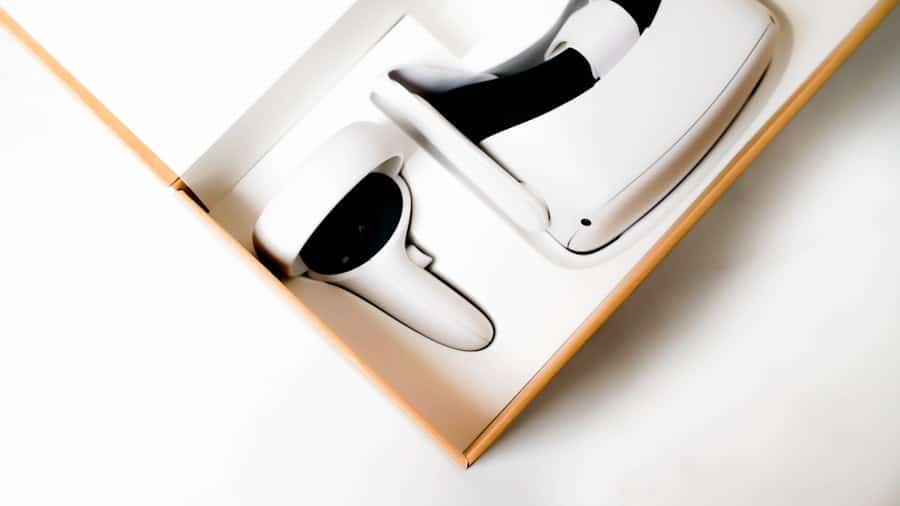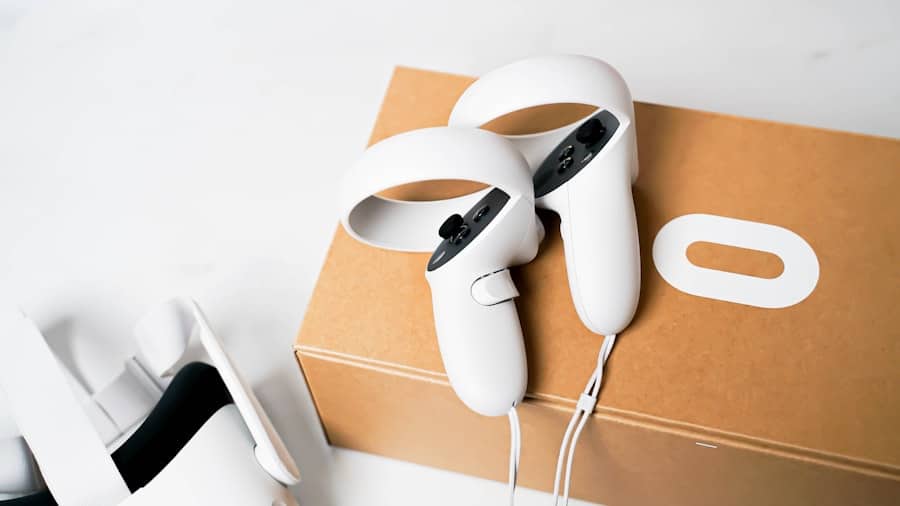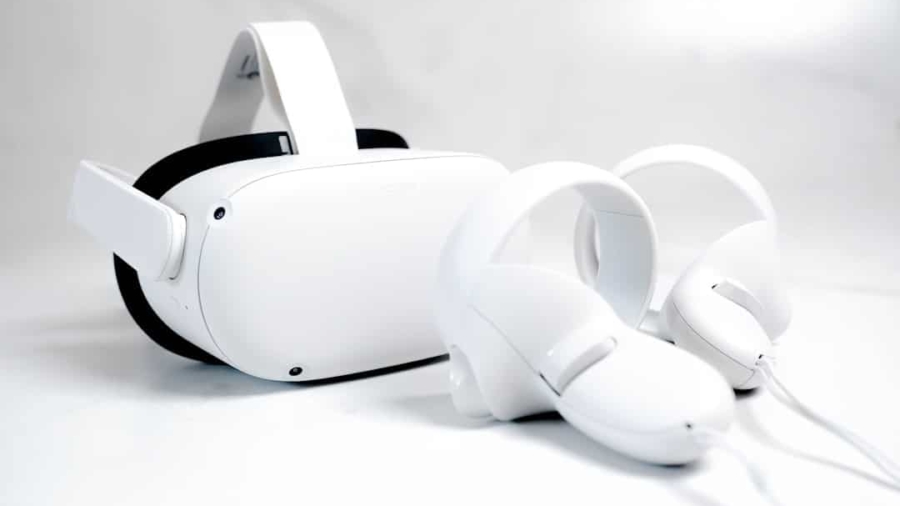Virtual Reality (VR) has emerged as a transformative tool in various fields, including healthcare, where it is increasingly being utilized for cognitive rehabilitation following a stroke. A stroke can lead to significant cognitive impairments, affecting memory, attention, executive function, and other critical cognitive domains. Traditional rehabilitation methods often involve repetitive tasks and exercises that may not engage patients fully or provide the necessary motivation for recovery.
In contrast, VR offers an immersive environment that can simulate real-world scenarios, allowing patients to practice cognitive skills in a safe and controlled setting. This innovative approach not only enhances engagement but also provides immediate feedback, which is crucial for learning and recovery. The integration of VR into cognitive rehabilitation represents a paradigm shift in how therapists approach recovery after a stroke.
By leveraging the capabilities of VR technology, clinicians can create personalized rehabilitation programs tailored to the specific needs of each patient. This customization is vital, as cognitive impairments can vary widely among individuals who have experienced a stroke. Furthermore, VR can facilitate remote therapy sessions, making rehabilitation more accessible for patients who may have mobility issues or live in remote areas.
As research continues to explore the efficacy of VR in this context, it is becoming increasingly clear that this technology holds significant promise for enhancing cognitive rehabilitation outcomes.
Key Takeaways
- VR technology offers a promising approach for cognitive rehabilitation after stroke, providing immersive and interactive experiences for patients.
- Current challenges in cognitive rehabilitation after stroke include limited access to specialized therapy, lack of engagement in traditional rehabilitation methods, and difficulty in maintaining long-term motivation.
- VR technology has the potential to improve cognitive rehabilitation after stroke by providing personalized and engaging therapy, increasing patient motivation, and offering real-time performance feedback.
- Advantages of using VR for cognitive rehabilitation after stroke include the ability to simulate real-life scenarios, customize therapy to individual needs, and track progress more accurately.
- Examples of VR programs for cognitive rehabilitation include virtual reality-based cognitive training, virtual reality-based motor rehabilitation, and virtual reality-based social interaction therapy.
Current Challenges in Cognitive Rehabilitation After Stroke
Variability in Cognitive Deficits
One of the primary obstacles is the variability in cognitive deficits experienced by stroke survivors. Each patient’s experience is unique, with some individuals facing mild impairments while others may struggle with severe cognitive dysfunction.
Limitations of Traditional Rehabilitation Methods
This variability complicates the development of standardized rehabilitation protocols, as what works for one patient may not be effective for another. Additionally, traditional rehabilitation methods often lack the engagement necessary to motivate patients to participate actively in their recovery process.
Resource Constraints and Multidisciplinary Care
Another significant challenge is the limited availability of resources and trained professionals in cognitive rehabilitation.
This scarcity can lead to long wait times for patients seeking therapy and may result in inadequate treatment options. Furthermore, cognitive rehabilitation often requires a multidisciplinary approach, involving psychologists, occupational therapists, and speech-language pathologists. Coordinating care among these professionals can be complex and time-consuming, further hindering effective rehabilitation efforts.
The Potential of VR Technology for Cognitive Rehabilitation

The potential of VR technology in cognitive rehabilitation is vast and multifaceted. One of the most compelling aspects of VR is its ability to create immersive environments that mimic real-life situations. This immersion can enhance the learning experience by allowing patients to practice cognitive skills in contexts that closely resemble their daily lives.
For instance, a patient recovering from a stroke may engage in a VR scenario that simulates grocery shopping, requiring them to navigate aisles, make decisions about purchases, and manage their time effectively. Such experiences can help reinforce cognitive skills in a practical and engaging manner. Moreover, VR technology can provide a level of interactivity that traditional rehabilitation methods often lack.
Patients can receive immediate feedback on their performance, which is essential for reinforcing learning and promoting skill acquisition. For example, if a patient struggles with attention tasks within a VR environment, the system can adjust the difficulty level in real-time based on their performance. This adaptability ensures that patients are consistently challenged without becoming overwhelmed, fostering a more effective learning environment.
Additionally, VR can track patient progress over time, allowing therapists to monitor improvements and adjust treatment plans accordingly.
Advantages of Using VR for Cognitive Rehabilitation After Stroke
The advantages of using VR for cognitive rehabilitation after stroke are numerous and impactful. One significant benefit is the increased engagement that VR provides. Traditional rehabilitation exercises can often feel monotonous and uninspiring, leading to decreased motivation among patients.
In contrast, VR immerses patients in interactive environments that capture their attention and encourage active participation. This heightened engagement can lead to improved adherence to rehabilitation programs and ultimately better outcomes. Another advantage of VR is its ability to facilitate personalized therapy experiences.
With customizable VR programs, therapists can tailor exercises to meet the specific needs and preferences of each patient. For instance, a therapist might design a VR scenario that focuses on improving memory skills for a patient who struggles with recalling names or faces. By aligning therapy with the patient’s interests and goals, therapists can enhance motivation and make the rehabilitation process more relevant to their everyday lives.
Furthermore, the ability to adjust difficulty levels within VR environments allows therapists to provide appropriate challenges that promote skill development without causing frustration.
Examples of VR Programs for Cognitive Rehabilitation
Several innovative VR programs have been developed specifically for cognitive rehabilitation after stroke, showcasing the versatility and effectiveness of this technology. One notable example is “Rehago,” a VR platform designed to improve cognitive functions such as attention, memory, and executive function through engaging games and tasks. Patients can participate in various activities that simulate real-life scenarios while receiving real-time feedback on their performance.
The program’s adaptability allows therapists to customize exercises based on individual patient needs. Another promising program is “VR Therapy,” which focuses on enhancing social cognition and communication skills among stroke survivors. This platform immerses patients in virtual social situations where they must navigate conversations and social cues.
By practicing these skills in a safe environment, patients can build confidence and improve their ability to interact with others in real life. Research has shown that such programs can lead to significant improvements in social cognition and overall quality of life for stroke survivors.
Considerations for Implementing VR in Clinical Settings

While the potential benefits of VR in cognitive rehabilitation are substantial, several considerations must be addressed when implementing this technology in clinical settings. One critical factor is ensuring that healthcare professionals are adequately trained to use VR systems effectively. Clinicians must understand how to integrate VR into existing rehabilitation protocols and how to interpret data generated by these systems.
Ongoing training and support will be essential to maximize the effectiveness of VR interventions. Additionally, accessibility remains a concern when considering the widespread adoption of VR technology in healthcare settings. The cost of VR equipment and software can be prohibitive for some facilities, particularly those with limited budgets or resources.
Ensuring equitable access to this technology will be crucial for its successful implementation across diverse healthcare environments. Furthermore, considerations regarding patient comfort and safety must be prioritized; some individuals may experience motion sickness or discomfort while using VR systems, necessitating careful monitoring during sessions.
The Future of VR in Cognitive Rehabilitation Research and Development
The future of VR in cognitive rehabilitation research and development holds great promise as advancements in technology continue to evolve. Ongoing studies are exploring the efficacy of various VR interventions across different populations and types of cognitive impairments resulting from strokes. Researchers are investigating how factors such as duration of exposure to VR therapy, frequency of sessions, and specific types of tasks impact recovery outcomes.
Moreover, as technology advances, we can expect improvements in the realism and interactivity of VR environments. Enhanced graphics and more sophisticated simulations will likely create even more engaging experiences for patients.
Additionally, the integration of artificial intelligence (AI) into VR systems could allow for more personalized therapy experiences by adapting scenarios based on individual patient responses and progress over time. This evolution will not only enhance the effectiveness of cognitive rehabilitation but also pave the way for new therapeutic modalities that leverage the unique capabilities of VR technology.
The Impact of VR on the Future of Cognitive Rehabilitation After Stroke
The impact of virtual reality on cognitive rehabilitation after stroke is profound and far-reaching. As this technology continues to develop and gain traction within clinical settings, it has the potential to revolutionize how cognitive impairments are addressed post-stroke. By providing immersive experiences that engage patients actively while allowing for personalized therapy options, VR stands poised to enhance recovery outcomes significantly.
As research continues to validate the efficacy of VR interventions, it is likely that we will see broader adoption across healthcare systems worldwide. The integration of VR into cognitive rehabilitation not only addresses existing challenges but also opens new avenues for innovation in patient care. Ultimately, as we embrace these advancements, we move closer to a future where stroke survivors can access more effective and engaging rehabilitation options tailored to their unique needs.
In addition to exploring the future of VR for cognitive rehabilitation after stroke, it is important to consider the security of the technology being used. To ensure the safety of personal data and information, it is crucial to invest in the best antivirus software available. According to a recent article on Enicomp, staying protected against cyber threats is essential in today’s digital age. By utilizing top-notch antivirus software, individuals can safeguard their devices and data while engaging in VR therapy for stroke recovery.
FAQs
What is VR cognitive rehabilitation for stroke patients?
VR cognitive rehabilitation for stroke patients is a form of therapy that uses virtual reality technology to help individuals recover cognitive functions that have been impaired due to a stroke. This therapy involves using VR simulations and exercises to improve memory, attention, problem-solving skills, and other cognitive abilities.
How does VR cognitive rehabilitation benefit stroke patients?
VR cognitive rehabilitation offers several benefits for stroke patients, including increased engagement and motivation during therapy, personalized and adaptive exercises, real-time performance feedback, and the ability to practice activities of daily living in a safe and controlled virtual environment. It also provides a more immersive and interactive experience compared to traditional therapy methods.
What are the potential future developments in VR for cognitive rehabilitation after stroke?
The future of VR for cognitive rehabilitation after stroke holds promise for advancements in technology, such as more sophisticated VR simulations and environments, improved motion tracking and gesture recognition, personalized treatment plans based on individual needs and progress, and integration with other forms of therapy and healthcare systems for a more comprehensive approach to stroke rehabilitation.
Are there any challenges or limitations to using VR for cognitive rehabilitation after stroke?
Some challenges and limitations of using VR for cognitive rehabilitation after stroke include the cost and accessibility of VR technology, the need for further research to establish the effectiveness of VR therapy compared to traditional methods, potential side effects such as motion sickness or disorientation, and the importance of professional supervision and guidance during VR therapy sessions.

